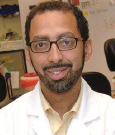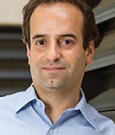The Howard Hughes Medical Institute announced 26 of the nation’s top biomedical researchers as investigators for the Institute. These scientists will receive the flexible support necessary to move their research in creative new directions. The initiative represents an investment in basic biomedical research of $153 million over the next 5 years.
“Scientific discovery requires original thinking and creativity,” says Institute President Robert Tjian, PhD. “Every scientist selected has demonstrated these qualities. We don’t know this for certain, but the ideas that emerge from these labs might one day change the world, and it’s our privilege to help make that happen.”
The Institute will provide all investigators with their full salary, benefits, and a research budget over their initial 5-year appointment. The Institute will also cover other expenses, including research space and the purchase of critical equipment. Their appointment may be renewed for additional 5-year terms, each contingent on a successful scientific review.
Five cancer researchers are among the 26 selected.
Sue Biggins, PhD
Sue Biggins, PhD, of Fred Hutchinson Cancer Center, Seattle, studies the machinery that dividing cells use to ensure their daughter cells receive the correct allotment of chromosomes. Much of Dr. Biggins’s work focuses on kinetochores, structures that connect chromosomes to the long, thin microtubules that tug them to the appropriate ends of a dividing cell. She has shed light on how cells make sure that these structures—which comprise hundreds of proteins and must be reassembled every time a cell divides—are positioned in the right spot on chromosomes.
Dr. Biggins also showed how a protein called Aurora B forces cells to stop and fix things if microtubules are incorrectly attached to a kinetochore, before cell division can proceed. In 2010, she purified kinetochores from yeast cells and reconstituted their attachments to microtubules for the first time.
Levi A. Garraway, MD, PhD
Levi A. Garraway, MD, PhD, of Dana-Farber Cancer Institute, Boston, studies how genetic and molecular alterations that lurk inside tumor cells cause cancers to grow and spread—and how this knowledge might inform new therapeutic avenues. His studies of melanoma and prostate cancers have turned up entirely new classes of cancer-causing genes.
Dr. Garraway’s research group was also the first to identify prevalent cancer-promoting mutations in parts of the genome that do not encode proteins. That led to the discovery that more than 70% of melanomas harbor mutations in a stretch of regulatory DNA that switches on production of telomerase, an enzyme that helps determine cells’ longevity.
Dr. Garraway is also intent on learning how tumors become resistant to cancer drugs. He and his colleagues have used systematic genetic screens to identify the ways cells are most likely to become resistant to targeted therapies. These findings are informing the design of clinical trials to evaluate combination therapies for melanoma and other cancers. Also working in the field of precision medicine, his team has adapted genomic technologies to survey patients’ tumors for hundreds of cancer gene alterations, creating tumor profiles that can be used to identify the best candidates for clinical trials and, in the future, to tailor treatments to individual patients.
Reuben S. Harris, PhD
Reuben S. Harris, PhD, of the University of Minnesota, Twin Cities, studies the physiologic and pathologic functions of a family of DNA-mutating enzymes. His work is illuminating the roles that these DNA-mutating enzymes play in boosting the effectiveness of immune responses, as well as spurring the growth of cancer cells.
As a postdoctoral researcher, Dr. Harris discovered that an enzyme in immune cells helps produce the vast repertoire of antibodies by editing DNA in a specific way. The enzyme, activation-induced cytidine deaminase (AID), converts cytosines to uracils, creating an obvious error that cells attempt to repair, introducing mutations along the way. Dr. Harris also showed that several related enzymes alter DNA in the same way.
As an independent investigator, he demonstrated that several of these enzymes, including APOBEC3F and APOBEC3G, restrict the growth of HIV by inducing mutations in viral DNA. In further studies of these and related enzymes, Dr. Harris detailed how HIV-1 defends itself by degrading APOBEC3 proteins. He recently determined that another family member, APOBEC3B, is a major source of genomic mutations in breast cancer and that high levels of APOBEC3B correlate with poorer outcomes for patients. Follow-up studies from Dr. Harris and others have implicated these editing enzymes in driving mutation in many tumor types.
Joshua T. Mendell, MD, PhD
Joshua T. Mendell, MD, PhD, of The University of Texas Southwestern Medical Center, Dallas, quickly established himself as a leader in determining how microRNAs influence development and disease. His first big discovery came in 2005, when he showed that a well-known cancer-promoting protein, MYC, directly stimulates production of a specific cluster of six microRNAs. He and others have since demonstrated that these microRNAs contribute to MYC’s ability to drive tumor formation.
Work from Dr. Mendell’s team has revealed involvement of microRNAs in several other critical cancer pathways as well, and recently the lab showed that certain microRNAs are important for wound healing. Dr. Mendell’s group has also uncovered new mechanisms through which the abundance of microRNAs is controlled in normal tissues and in tumors.
Ultimately, Dr. Mendell is interested in developing new therapies for human disease, and his work in animal models has provided persuasive evidence of the therapeutic potential of microRNAs. His team slowed the growth of liver tumors in mice dramatically by giving the animals a specific microRNA that was present at lower levels in cancer cells than in healthy liver cells. The treatment killed tumor cells but preserved healthy cells, suggesting that such therapies might be well tolerated and effective.
Jennifer A. Zallen, PhD
Jennifer A. Zallen, PhD, of Memorial Sloan Kettering Cancer Center, New York, and her team identified a molecular code that systematically orients cell movements throughout the embryo and orchestrates this dramatic shape change. This work, unraveling the molecular signals and biophysical forces that shape developing embryos, is an important foundation for understanding how errors in these processes lead to birth defects, kidney disease, and cancer.
For a full list of the 2015 Howard Hughes Medical Institute investigators, visit http://www.hhmi.org/news/hhmi-selects-26-nations-top-biomedical-scientists. ■







